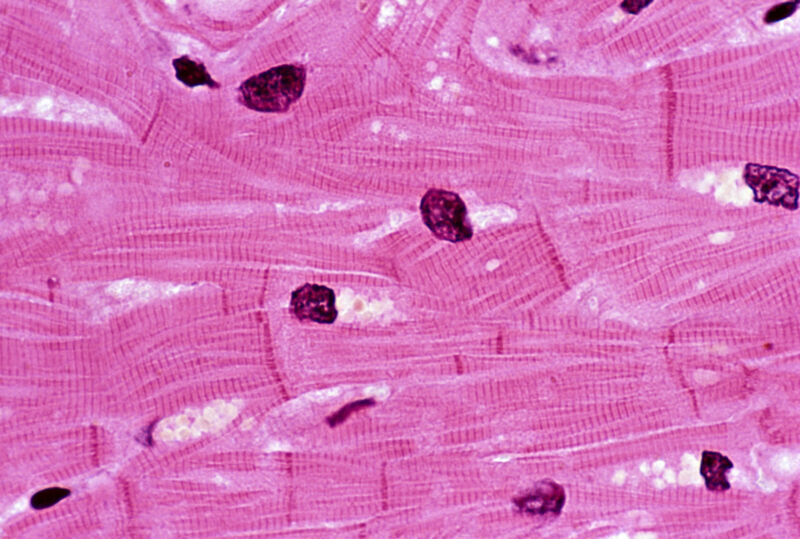Pig heart transplant failure: Doctors detail everything that went wrong

Enlarge / Much of the heart is composed of muscle cells like the ones shown here. (credit: Ed Reschke)
Earlier this year, news broke of the first experimental xenotransplantation: A human patient with heart disease received a heart from a pig that had been genetically engineered to avoid rejection. While initially successful, the experiment ended two months later when the transplant failed, leading to the death of the patient. At the time, the team didn't disclose any details regarding what went wrong. But this week saw the publication of a research paper that goes through everything that happened to prepare for the transplant and the weeks following.
Critically, this includes the eventual failure of the transplant, which was triggered by the death of many of the muscle cells in the transplanted heart. But the reason for that death isn't clear, and the typical signs of rejection by the immune system weren't present. So, we're going to have to wait a while to understand what went wrong.
A solid startOverall, the paper paints a picture of organ recipient David Bennett as a patient who was on the verge of death when the transplant took place. He was an obvious candidate for a heart transplant and was only kept alive through the use of a device that helped oxygenate his blood outside his body. But the patient had what the researchers refer to as "poor adherence to treatment," which led four different transplant programs to deny him a human heart transplant. At that point, he and his family agreed to participate in the experimental xenotransplant program.
Read 11 remaining paragraphs | Comments